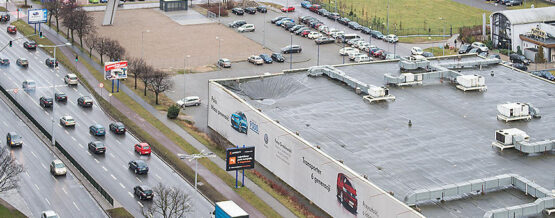WHERE DOES THE MONITORING SYSTEM COME FROM IN THE LEGISLATION?
If I quoted the relevant provision relating to the title issue, which is construction monitoring, most of you would not read the rest of the article. I assume that the rest would die of boredom, wading through the quoted paragraphs. I will therefore start by explaining why structural monitoring systems have been introduced into the building regulations and what they are actually used for.
New provisions are introduced into existing legislation, usually in order to improve existing solutions and to keep up with technological progress. However, let us consider how the safety of building structures is currently supervised. In conversations with building managers, it is very often stated that this extremely important activity is reduced to a visual inspection of the structure. It takes place once every six months. Alternatively, it is managed on an ad hoc basis to ensure that the building is not overloaded, for example by a layer of snow on the roof.
In order to eliminate the unreliable human factor and guarantee the safety of the building, various monitoring systems are used, e.g:
- fire alarm system,
- video surveillance,
- structural monitoring.
I will devote a little more space to the last issue. Structural monitoring system has to control selected parameters, determining durability and reliability of the building, e.g. displacement, deflection, deformation, vibration, settlement, verticality etc. It is not only to ensure the safety of people in the building, but also to control and reduce building maintenance costs.
Let us now turn to the basic features of this system, considered to be one of the best currently available solutions for roof structure monitoring.
STRUCTURAL MONITORING UNDER A MAGNIFYING GLASS
Due to the potential for emergencies, we recommend that structural monitoring systems take measurements at intervals of no less than every 3 minutes. Let the following cases of disasters caused by heavy rain convince you why it is worth adopting such an interval. Thus, in Gdańsk, a large commercial building was damaged in 2015. Almost a year later, in November 2016, a car showroom in Lublin collapsed. The cause of both disasters was water piling up on the roof and overloading the structure. These accidents could have been avoided if the companies managing the building had up-to-date information about the condition of the roof structure.
The second important aspect of a structural monitoring system is the number of measurement points. The basic rule is simple: the bigger the building and the larger the roof area, the more measurement points there should be. But be careful, let us not exaggerate in the opposite direction and make a warehouse a laboratory for structural testing. Therefore, we suggest that it is good and proven practice to equip smaller buildings with
- smaller buildings with min. 4-5 measuring points,
- and buildings over 10 000 m2 – at least one measuring point for every 1000 m2 of roof surface
Another quite obvious issue concerns the implementation of measurements without interfering with the functioning of the building. Simply put, the point is that the measurement should not affect the people in the building in any way, should not disturb their normal functioning and should not cause false alarms.
All other aspects are already the responsibility of other branches. The design engineer determines the physical quantities to be measured (e.g. deflection, sway) and calculates the limit values for the selected measuring points. The network administrator, on the other hand, has the task of defining the standard for data transmission and archiving, e.g. to the cloud or to the BMS.
In summary, there are three important features to bear in mind when deciding on a construction monitoring system:
- frequency of measurements – not less than every 3 minutes,
- number of measuring points adequate to the size of the building,
- no interference in the functioning of the building.
LEGAL CLARIFICATION
Finally, I would like to mention a provision, which can be found in the Technical Conditions and which defines what restrictions must be met by buildings and their location – due to the Polish Law.
Paragraph 204 [Load-bearing capacity and serviceability limit states]
Paragraph. 7 Public utility buildings with rooms intended for a considerable number of people, such as: entertainment halls, sports halls, exhibition halls, fair halls, shopping halls, railway stations should be equipped, depending on the needs, with devices for constant control of parameters important for the safety of the structure, such as: displacements, deformations and stresses in the structure.
CoInterestingly, despite the fact that the above refers to public buildings, the vast majority of buildings in which the Sense S-One structural monitoring system has been installed are industrial facilities. Can you guess why this is?
If you are an architect designing a shopping mall, sports hall or industrial building with a large roof area, see how you can make it safer with the Sense S-One structural monitoring system.








